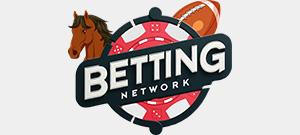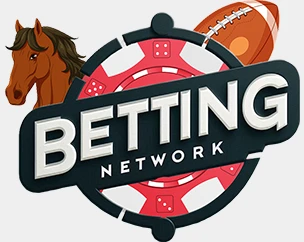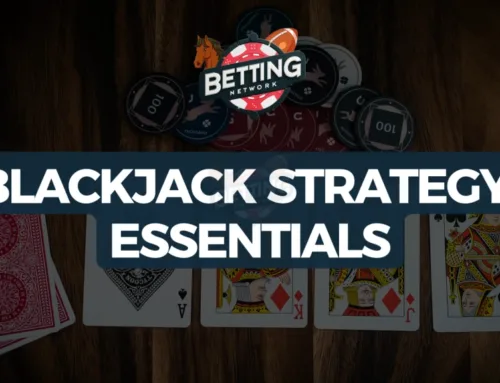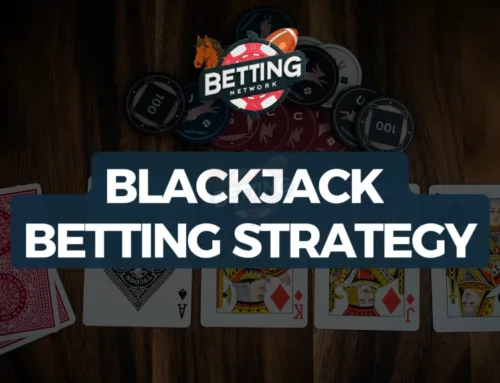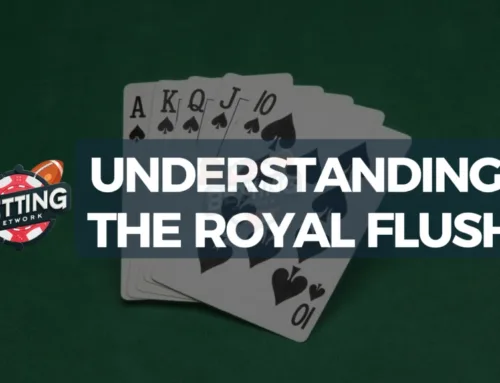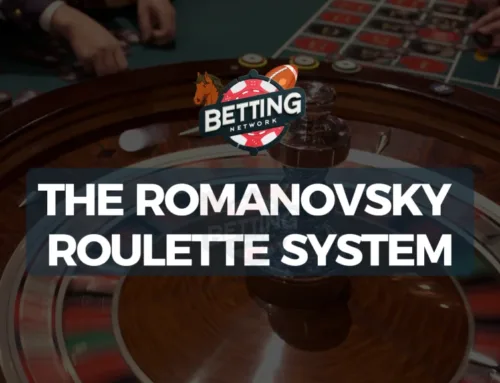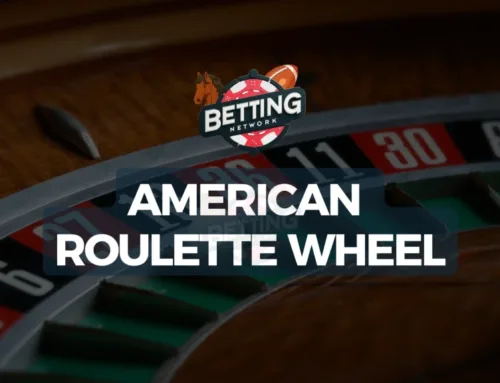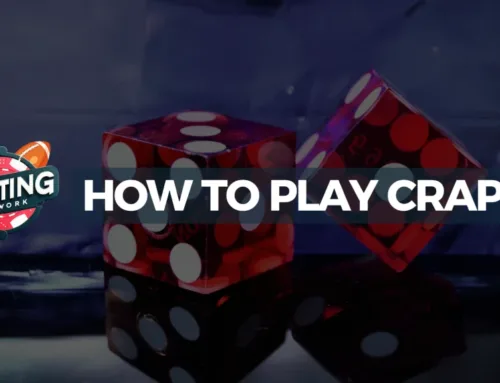Knowing when to surrender in Blackjack is what differentiates newbies and casual players from the real pros. It’s one of the most powerful strategies when it comes to cutting losses and maximizing winning hands, and an essential tool to manage your bankroll in the long haul.
Today, i’m going to explain all that you need to know about when to surrender in Blackjack, in very simple terms.
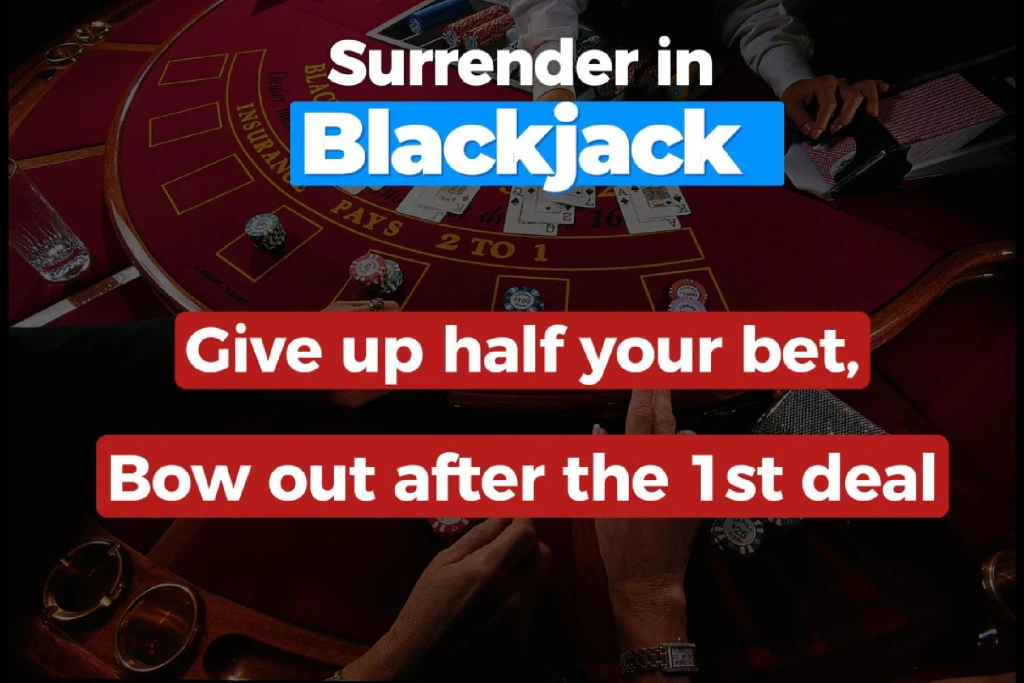
What Does Surrender Mean in Blackjack?
In blackjack, surrender lets you give up half your bet and bow out after the first deal. The idea is to avoid losing full bets on hands that, statistically, are likely to lose to the dealer’s hand.
The reason this is more of an “advanced” skill for blackjack players, is because you’ll need to evaluate your hand and the dealer’s card and make a snap judgement.
Exploring Early Surrender in Blackjack
Early surrender is a blackjack rule that lets you gold immediately after the cards are dealt, and before the dealer can check for blackjack. Again, you’ll lose half your bet, but when done correctly, it can minimize losses by 50%.
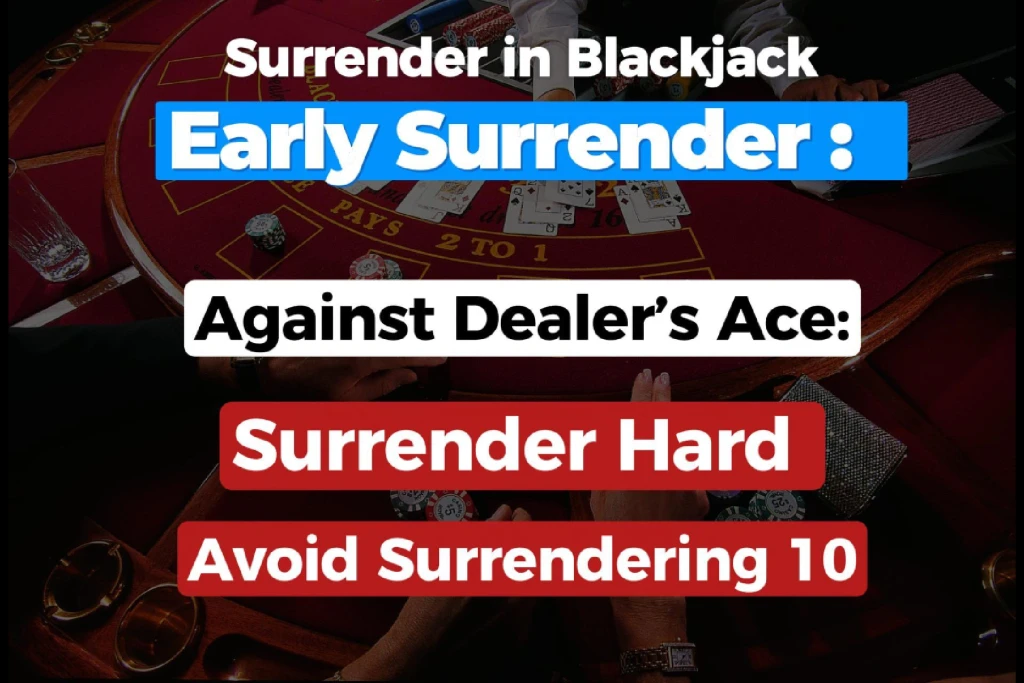
Decoding Late Surrender in Blackjack
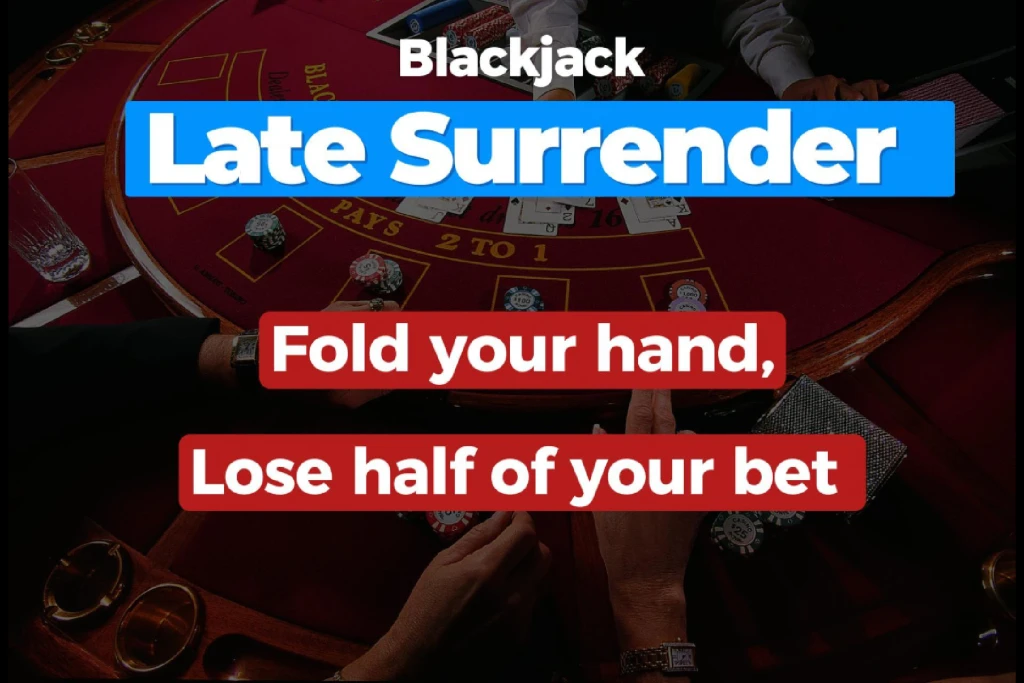
Late surrender is a blackjack rule that allows you to fold your hand and lose only half of your bet after the dealer checks for blackjack.
This is a viable strategy if the dealer doesn’t have blackjack, and it’s a final chance to minimize your losses. This also requires you to calculate your hand’s overall strength compared to the dealer’s visible card. Card counters have an extra advantage in this scenario, but this is not always an option available, especially in online play.
This strategy is smart when you’re likely to lose, helping you manage potential losses more effectively. They key is understanding when the odds are stacked against you. Yes, it’s still technically possible to keep playing and see the house bust, but if that’s unlikely to happen, then why donate your money to the house?
You’re better off choosing a charity and donating directly to them at that point.
Optimal Times to Surrender in Blackjack
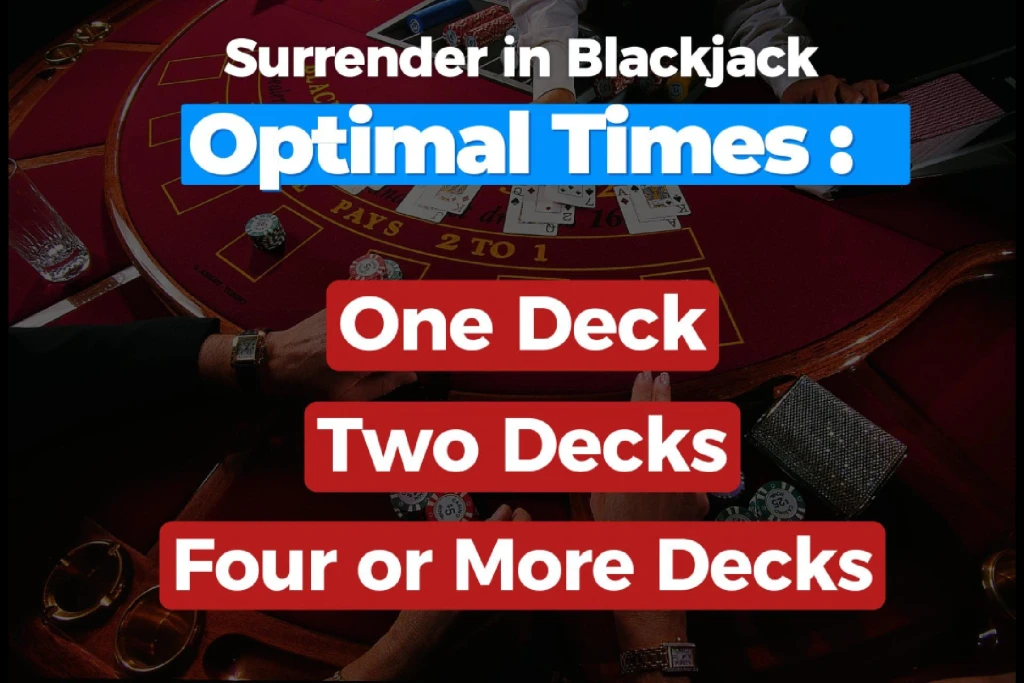
Choosing when to surrender in blackjack depends on the number of decks in play and the specific cards you and the dealer hold. Here’s a guide to understanding when surrender might be your best option:
Late Surrender: When to Fold
| Deck Type | Situation | Surrender Advice |
|---|---|---|
| One Deck | • 15 against a dealer’s 10 or Ace (H17) • 16 against a dealer’s 9, 10, or Ace • 17 against a dealer’s Ace (H17) |
• Do not surrender • Surrender recommended • Consider surrendering |
| Two Decks | • 15 against a dealer’s 10 • 16 against a dealer’s 9, 10, or Ace • 17 against a dealer’s Ace (H17) |
• Surrender if the dealer hits on soft 17 • Always surrender • Surrender advisable |
| Four or More Decks | • 15 against a dealer’s 10 or Ace (S17) • 16 against any dealer card from 9 to Ace • 17 against a dealer’s Ace |
• Surrender advisable • Always surrender • Surrender considered favorable |
| Early Surrender Moments | • Against Dealer’s Ace • Against Dealer’s 10 • Avoid surrendering a total of 10 in single/double deck games |
• Surrender hard 5-7, hard 12-17, or pairs of 3s, 6s, 7s, 8s • Surrender hard 14-16 or pairs of 7s or 8s • Only when doubling after a split is allowed |
The surrender option essentially allows you to play longer, minimize the house’s edge and tip the scales in your favor. It’s a powerful tool, when used correctly that is.
Blackjack: To Surrender or Stand on 17?
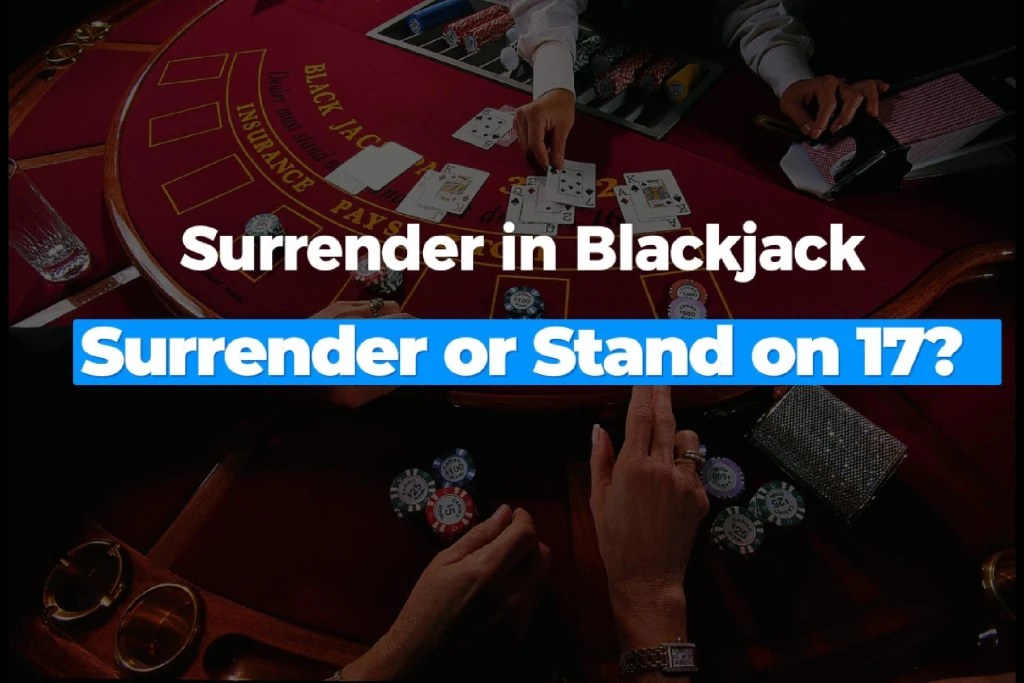
Understanding the probabilities when you decide to stand on a 17 in Blackjack is crucial. Here’s an analysis considering the dealer’s outcomes:
| Scenario | Details |
|---|---|
| Dealer’s Outcomes | • The dealer hits until reaching at least 17. • Dealer must stand on all 17s (common in most Blackjack variants). |
| Scenarios When You Stand on 17 | • The dealer may bust (exceed 21). • Dealer outcomes below 17 are not possible. • The dealer could finish exactly with 17. • The dealer might end up with 18, 19, 20, or 21. |
| Calculating Probabilities | • Chance the dealer busts varies depending on their upcard. • Probabilities for finishing with 17 through 21 depend on the dealer’s upcard. |
| Typical Dealer Outcome Probabilities (Multi-deck, Dealer Stands on All 17s) | • If Dealer’s Upcard is an Ace: – Busts: ~17% – Finishes with 17: ~13% – Finishes with 18: ~13% – Finishes with 19: ~13% – Finishes with 20: ~18% – Finishes with 21: ~26% • If Dealer’s Upcard is 6 (favorable for players): – Busts: ~42% – Finishes with 17: ~26% – Finishes with 18: ~13% – Finishes with 19: ~8% – Finishes with 20: ~7% – Finishes with 21: ~4% |
Final Words on Surrendering in Blackjack
Surrendering in Blackjack is the kind of move that understands you’re playing a numbers game. Inevitably, you’ll run into terrible hands, all that matters is that you’re able to recognize them as such, and minimize losses.
The decision to surrender should align with the overall odds of the game situation. Surrender is a defensive move to prevent greater losses in scenarios where the probability of winning is critically low.
Knowing when to use this option effectively can make a significant difference in managing your bankroll and maximizing your overall winnings in Blackjack. that, and having the necessary discipline to only gamble money that you can afford to lose.
FAQs on When to Surrender in Blackjack
Here are some frequently asked questions about the surrender option in blackjack, which can be a strategic tool for minimizing losses:
What is surrender in blackjack?
Surrender in blackjack allows a player to fold their hand after receiving the initial two cards if they believe their chances of winning are low. By choosing to surrender, the player forfeits half of their bet but retains the other half, instead of potentially losing the full amount if they continued with the hand .
When should you use the surrender option in blackjack?
The surrender option is typically used in a few specific situations to minimize losses:
Against a Dealer’s Ace or Ten: If you have a hard 15 or 16 and the dealer shows a 10 or an Ace, it’s often advisable to surrender because these are situations where the likelihood of winning is very low .
Poor Hand Against a Strong Dealer’s Card: If your hand total is significantly low against a dealer’s strong upcard, surrendering can be a safer bet to recover half of your wager .
Are there different types of surrender in blackjack?
Yes, there are two types of surrender in blackjack:
Early Surrender: This allows you to give up your hand and half your bet before the dealer checks for blackjack. It’s a more favorable rule for players but is less commonly found .
Late Surrender: More commonly available, late surrender occurs after the dealer checks for blackjack but before they play out their hand. If the dealer has blackjack, you can’t surrender and will lose your entire bet if you don’t have blackjack yourself .
How does surrender affect the house edge in blackjack?
Using surrender wisely can slightly reduce the house edge. By opting to surrender in situations where you have a high probability of losing, you can save money in the long run, thus improving your overall playing strategy and reducing the effectiveness of the house edge .
Is surrender available in all blackjack games?
No, not all blackjack games offer the surrender option. It depends on the casino and the specific blackjack variant being played. Always check the table rules or ask the dealer if surrender is available before starting to play .
Knowing when to surrender in Blackjack is what differentiates newbies and casual players from the real pros. It’s one of the most powerful strategies when it comes to cutting losses and maximizing winning hands, and an essential tool to manage your bankroll in the long haul.
Today, i’m going to explain all that you need to know about when to surrender in Blackjack, in very simple terms.

What Does Surrender Mean in Blackjack?
In blackjack, surrender lets you give up half your bet and bow out after the first deal. The idea is to avoid losing full bets on hands that, statistically, are likely to lose to the dealer’s hand.
The reason this is more of an “advanced” skill for blackjack players, is because you’ll need to evaluate your hand and the dealer’s card and make a snap judgement.
Exploring Early Surrender in Blackjack
Early surrender is a blackjack rule that lets you gold immediately after the cards are dealt, and before the dealer can check for blackjack. Again, you’ll lose half your bet, but when done correctly, it can minimize losses by 50%.

Decoding Late Surrender in Blackjack

Late surrender is a blackjack rule that allows you to fold your hand and lose only half of your bet after the dealer checks for blackjack.
This is a viable strategy if the dealer doesn’t have blackjack, and it’s a final chance to minimize your losses. This also requires you to calculate your hand’s overall strength compared to the dealer’s visible card. Card counters have an extra advantage in this scenario, but this is not always an option available, especially in online play.
This strategy is smart when you’re likely to lose, helping you manage potential losses more effectively. They key is understanding when the odds are stacked against you. Yes, it’s still technically possible to keep playing and see the house bust, but if that’s unlikely to happen, then why donate your money to the house?
You’re better off choosing a charity and donating directly to them at that point.
Optimal Times to Surrender in Blackjack

Choosing when to surrender in blackjack depends on the number of decks in play and the specific cards you and the dealer hold. Here’s a guide to understanding when surrender might be your best option:
Late Surrender: When to Fold
| Deck Type | Situation | Surrender Advice |
|---|---|---|
| One Deck | • 15 against a dealer’s 10 or Ace (H17) • 16 against a dealer’s 9, 10, or Ace • 17 against a dealer’s Ace (H17) |
• Do not surrender • Surrender recommended • Consider surrendering |
| Two Decks | • 15 against a dealer’s 10 • 16 against a dealer’s 9, 10, or Ace • 17 against a dealer’s Ace (H17) |
• Surrender if the dealer hits on soft 17 • Always surrender • Surrender advisable |
| Four or More Decks | • 15 against a dealer’s 10 or Ace (S17) • 16 against any dealer card from 9 to Ace • 17 against a dealer’s Ace |
• Surrender advisable • Always surrender • Surrender considered favorable |
| Early Surrender Moments | • Against Dealer’s Ace • Against Dealer’s 10 • Avoid surrendering a total of 10 in single/double deck games |
• Surrender hard 5-7, hard 12-17, or pairs of 3s, 6s, 7s, 8s • Surrender hard 14-16 or pairs of 7s or 8s • Only when doubling after a split is allowed |
The surrender option essentially allows you to play longer, minimize the house’s edge and tip the scales in your favor. It’s a powerful tool, when used correctly that is.
Blackjack: To Surrender or Stand on 17?

Understanding the probabilities when you decide to stand on a 17 in Blackjack is crucial. Here’s an analysis considering the dealer’s outcomes:
| Scenario | Details |
|---|---|
| Dealer’s Outcomes | • The dealer hits until reaching at least 17. • Dealer must stand on all 17s (common in most Blackjack variants). |
| Scenarios When You Stand on 17 | • The dealer may bust (exceed 21). • Dealer outcomes below 17 are not possible. • The dealer could finish exactly with 17. • The dealer might end up with 18, 19, 20, or 21. |
| Calculating Probabilities | • Chance the dealer busts varies depending on their upcard. • Probabilities for finishing with 17 through 21 depend on the dealer’s upcard. |
| Typical Dealer Outcome Probabilities (Multi-deck, Dealer Stands on All 17s) | • If Dealer’s Upcard is an Ace: – Busts: ~17% – Finishes with 17: ~13% – Finishes with 18: ~13% – Finishes with 19: ~13% – Finishes with 20: ~18% – Finishes with 21: ~26% • If Dealer’s Upcard is 6 (favorable for players): – Busts: ~42% – Finishes with 17: ~26% – Finishes with 18: ~13% – Finishes with 19: ~8% – Finishes with 20: ~7% – Finishes with 21: ~4% |
Final Words on Surrendering in Blackjack
Surrendering in Blackjack is the kind of move that understands you’re playing a numbers game. Inevitably, you’ll run into terrible hands, all that matters is that you’re able to recognize them as such, and minimize losses.
The decision to surrender should align with the overall odds of the game situation. Surrender is a defensive move to prevent greater losses in scenarios where the probability of winning is critically low.
Knowing when to use this option effectively can make a significant difference in managing your bankroll and maximizing your overall winnings in Blackjack. that, and having the necessary discipline to only gamble money that you can afford to lose.
FAQs on When to Surrender in Blackjack
Here are some frequently asked questions about the surrender option in blackjack, which can be a strategic tool for minimizing losses:
What is surrender in blackjack?
Surrender in blackjack allows a player to fold their hand after receiving the initial two cards if they believe their chances of winning are low. By choosing to surrender, the player forfeits half of their bet but retains the other half, instead of potentially losing the full amount if they continued with the hand .
When should you use the surrender option in blackjack?
The surrender option is typically used in a few specific situations to minimize losses:
Against a Dealer’s Ace or Ten: If you have a hard 15 or 16 and the dealer shows a 10 or an Ace, it’s often advisable to surrender because these are situations where the likelihood of winning is very low .
Poor Hand Against a Strong Dealer’s Card: If your hand total is significantly low against a dealer’s strong upcard, surrendering can be a safer bet to recover half of your wager .
Are there different types of surrender in blackjack?
Yes, there are two types of surrender in blackjack:
Early Surrender: This allows you to give up your hand and half your bet before the dealer checks for blackjack. It’s a more favorable rule for players but is less commonly found .
Late Surrender: More commonly available, late surrender occurs after the dealer checks for blackjack but before they play out their hand. If the dealer has blackjack, you can’t surrender and will lose your entire bet if you don’t have blackjack yourself .
How does surrender affect the house edge in blackjack?
Using surrender wisely can slightly reduce the house edge. By opting to surrender in situations where you have a high probability of losing, you can save money in the long run, thus improving your overall playing strategy and reducing the effectiveness of the house edge .
Is surrender available in all blackjack games?
No, not all blackjack games offer the surrender option. It depends on the casino and the specific blackjack variant being played. Always check the table rules or ask the dealer if surrender is available before starting to play .
Knowing when to surrender in Blackjack is what differentiates newbies and casual players from the real pros. It’s one of the most powerful strategies when it comes to cutting losses and maximizing winning hands, and an essential tool to manage your bankroll in the long haul.
Today, i’m going to explain all that you need to know about when to surrender in Blackjack, in very simple terms.

What Does Surrender Mean in Blackjack?
In blackjack, surrender lets you give up half your bet and bow out after the first deal. The idea is to avoid losing full bets on hands that, statistically, are likely to lose to the dealer’s hand.
The reason this is more of an “advanced” skill for blackjack players, is because you’ll need to evaluate your hand and the dealer’s card and make a snap judgement.
Exploring Early Surrender in Blackjack
Early surrender is a blackjack rule that lets you gold immediately after the cards are dealt, and before the dealer can check for blackjack. Again, you’ll lose half your bet, but when done correctly, it can minimize losses by 50%.

Decoding Late Surrender in Blackjack

Late surrender is a blackjack rule that allows you to fold your hand and lose only half of your bet after the dealer checks for blackjack.
This is a viable strategy if the dealer doesn’t have blackjack, and it’s a final chance to minimize your losses. This also requires you to calculate your hand’s overall strength compared to the dealer’s visible card. Card counters have an extra advantage in this scenario, but this is not always an option available, especially in online play.
This strategy is smart when you’re likely to lose, helping you manage potential losses more effectively. They key is understanding when the odds are stacked against you. Yes, it’s still technically possible to keep playing and see the house bust, but if that’s unlikely to happen, then why donate your money to the house?
You’re better off choosing a charity and donating directly to them at that point.
Optimal Times to Surrender in Blackjack

Choosing when to surrender in blackjack depends on the number of decks in play and the specific cards you and the dealer hold. Here’s a guide to understanding when surrender might be your best option:
Late Surrender: When to Fold
| Deck Type | Situation | Surrender Advice |
|---|---|---|
| One Deck | • 15 against a dealer’s 10 or Ace (H17) • 16 against a dealer’s 9, 10, or Ace • 17 against a dealer’s Ace (H17) |
• Do not surrender • Surrender recommended • Consider surrendering |
| Two Decks | • 15 against a dealer’s 10 • 16 against a dealer’s 9, 10, or Ace • 17 against a dealer’s Ace (H17) |
• Surrender if the dealer hits on soft 17 • Always surrender • Surrender advisable |
| Four or More Decks | • 15 against a dealer’s 10 or Ace (S17) • 16 against any dealer card from 9 to Ace • 17 against a dealer’s Ace |
• Surrender advisable • Always surrender • Surrender considered favorable |
| Early Surrender Moments | • Against Dealer’s Ace • Against Dealer’s 10 • Avoid surrendering a total of 10 in single/double deck games |
• Surrender hard 5-7, hard 12-17, or pairs of 3s, 6s, 7s, 8s • Surrender hard 14-16 or pairs of 7s or 8s • Only when doubling after a split is allowed |
The surrender option essentially allows you to play longer, minimize the house’s edge and tip the scales in your favor. It’s a powerful tool, when used correctly that is.
Blackjack: To Surrender or Stand on 17?

Understanding the probabilities when you decide to stand on a 17 in Blackjack is crucial. Here’s an analysis considering the dealer’s outcomes:
| Scenario | Details |
|---|---|
| Dealer’s Outcomes | • The dealer hits until reaching at least 17. • Dealer must stand on all 17s (common in most Blackjack variants). |
| Scenarios When You Stand on 17 | • The dealer may bust (exceed 21). • Dealer outcomes below 17 are not possible. • The dealer could finish exactly with 17. • The dealer might end up with 18, 19, 20, or 21. |
| Calculating Probabilities | • Chance the dealer busts varies depending on their upcard. • Probabilities for finishing with 17 through 21 depend on the dealer’s upcard. |
| Typical Dealer Outcome Probabilities (Multi-deck, Dealer Stands on All 17s) | • If Dealer’s Upcard is an Ace: – Busts: ~17% – Finishes with 17: ~13% – Finishes with 18: ~13% – Finishes with 19: ~13% – Finishes with 20: ~18% – Finishes with 21: ~26% • If Dealer’s Upcard is 6 (favorable for players): – Busts: ~42% – Finishes with 17: ~26% – Finishes with 18: ~13% – Finishes with 19: ~8% – Finishes with 20: ~7% – Finishes with 21: ~4% |
Final Words on Surrendering in Blackjack
Surrendering in Blackjack is the kind of move that understands you’re playing a numbers game. Inevitably, you’ll run into terrible hands, all that matters is that you’re able to recognize them as such, and minimize losses.
The decision to surrender should align with the overall odds of the game situation. Surrender is a defensive move to prevent greater losses in scenarios where the probability of winning is critically low.
Knowing when to use this option effectively can make a significant difference in managing your bankroll and maximizing your overall winnings in Blackjack. that, and having the necessary discipline to only gamble money that you can afford to lose.
FAQs on When to Surrender in Blackjack
Here are some frequently asked questions about the surrender option in blackjack, which can be a strategic tool for minimizing losses:
What is surrender in blackjack?
Surrender in blackjack allows a player to fold their hand after receiving the initial two cards if they believe their chances of winning are low. By choosing to surrender, the player forfeits half of their bet but retains the other half, instead of potentially losing the full amount if they continued with the hand .
When should you use the surrender option in blackjack?
The surrender option is typically used in a few specific situations to minimize losses:
Against a Dealer’s Ace or Ten: If you have a hard 15 or 16 and the dealer shows a 10 or an Ace, it’s often advisable to surrender because these are situations where the likelihood of winning is very low .
Poor Hand Against a Strong Dealer’s Card: If your hand total is significantly low against a dealer’s strong upcard, surrendering can be a safer bet to recover half of your wager .
Are there different types of surrender in blackjack?
Yes, there are two types of surrender in blackjack:
Early Surrender: This allows you to give up your hand and half your bet before the dealer checks for blackjack. It’s a more favorable rule for players but is less commonly found .
Late Surrender: More commonly available, late surrender occurs after the dealer checks for blackjack but before they play out their hand. If the dealer has blackjack, you can’t surrender and will lose your entire bet if you don’t have blackjack yourself .
How does surrender affect the house edge in blackjack?
Using surrender wisely can slightly reduce the house edge. By opting to surrender in situations where you have a high probability of losing, you can save money in the long run, thus improving your overall playing strategy and reducing the effectiveness of the house edge .
Is surrender available in all blackjack games?
No, not all blackjack games offer the surrender option. It depends on the casino and the specific blackjack variant being played. Always check the table rules or ask the dealer if surrender is available before starting to play .
Knowing when to surrender in Blackjack is what differentiates newbies and casual players from the real pros. It’s one of the most powerful strategies when it comes to cutting losses and maximizing winning hands, and an essential tool to manage your bankroll in the long haul.
Today, i’m going to explain all that you need to know about when to surrender in Blackjack, in very simple terms.

What Does Surrender Mean in Blackjack?
In blackjack, surrender lets you give up half your bet and bow out after the first deal. The idea is to avoid losing full bets on hands that, statistically, are likely to lose to the dealer’s hand.
The reason this is more of an “advanced” skill for blackjack players, is because you’ll need to evaluate your hand and the dealer’s card and make a snap judgement.
Exploring Early Surrender in Blackjack
Early surrender is a blackjack rule that lets you gold immediately after the cards are dealt, and before the dealer can check for blackjack. Again, you’ll lose half your bet, but when done correctly, it can minimize losses by 50%.

Decoding Late Surrender in Blackjack

Late surrender is a blackjack rule that allows you to fold your hand and lose only half of your bet after the dealer checks for blackjack.
This is a viable strategy if the dealer doesn’t have blackjack, and it’s a final chance to minimize your losses. This also requires you to calculate your hand’s overall strength compared to the dealer’s visible card. Card counters have an extra advantage in this scenario, but this is not always an option available, especially in online play.
This strategy is smart when you’re likely to lose, helping you manage potential losses more effectively. They key is understanding when the odds are stacked against you. Yes, it’s still technically possible to keep playing and see the house bust, but if that’s unlikely to happen, then why donate your money to the house?
You’re better off choosing a charity and donating directly to them at that point.
Optimal Times to Surrender in Blackjack

Choosing when to surrender in blackjack depends on the number of decks in play and the specific cards you and the dealer hold. Here’s a guide to understanding when surrender might be your best option:
Late Surrender: When to Fold
| Deck Type | Situation | Surrender Advice |
|---|---|---|
| One Deck | • 15 against a dealer’s 10 or Ace (H17) • 16 against a dealer’s 9, 10, or Ace • 17 against a dealer’s Ace (H17) |
• Do not surrender • Surrender recommended • Consider surrendering |
| Two Decks | • 15 against a dealer’s 10 • 16 against a dealer’s 9, 10, or Ace • 17 against a dealer’s Ace (H17) |
• Surrender if the dealer hits on soft 17 • Always surrender • Surrender advisable |
| Four or More Decks | • 15 against a dealer’s 10 or Ace (S17) • 16 against any dealer card from 9 to Ace • 17 against a dealer’s Ace |
• Surrender advisable • Always surrender • Surrender considered favorable |
| Early Surrender Moments | • Against Dealer’s Ace • Against Dealer’s 10 • Avoid surrendering a total of 10 in single/double deck games |
• Surrender hard 5-7, hard 12-17, or pairs of 3s, 6s, 7s, 8s • Surrender hard 14-16 or pairs of 7s or 8s • Only when doubling after a split is allowed |
The surrender option essentially allows you to play longer, minimize the house’s edge and tip the scales in your favor. It’s a powerful tool, when used correctly that is.
Blackjack: To Surrender or Stand on 17?

Understanding the probabilities when you decide to stand on a 17 in Blackjack is crucial. Here’s an analysis considering the dealer’s outcomes:
| Scenario | Details |
|---|---|
| Dealer’s Outcomes | • The dealer hits until reaching at least 17. • Dealer must stand on all 17s (common in most Blackjack variants). |
| Scenarios When You Stand on 17 | • The dealer may bust (exceed 21). • Dealer outcomes below 17 are not possible. • The dealer could finish exactly with 17. • The dealer might end up with 18, 19, 20, or 21. |
| Calculating Probabilities | • Chance the dealer busts varies depending on their upcard. • Probabilities for finishing with 17 through 21 depend on the dealer’s upcard. |
| Typical Dealer Outcome Probabilities (Multi-deck, Dealer Stands on All 17s) | • If Dealer’s Upcard is an Ace: – Busts: ~17% – Finishes with 17: ~13% – Finishes with 18: ~13% – Finishes with 19: ~13% – Finishes with 20: ~18% – Finishes with 21: ~26% • If Dealer’s Upcard is 6 (favorable for players): – Busts: ~42% – Finishes with 17: ~26% – Finishes with 18: ~13% – Finishes with 19: ~8% – Finishes with 20: ~7% – Finishes with 21: ~4% |
Final Words on Surrendering in Blackjack
Surrendering in Blackjack is the kind of move that understands you’re playing a numbers game. Inevitably, you’ll run into terrible hands, all that matters is that you’re able to recognize them as such, and minimize losses.
The decision to surrender should align with the overall odds of the game situation. Surrender is a defensive move to prevent greater losses in scenarios where the probability of winning is critically low.
Knowing when to use this option effectively can make a significant difference in managing your bankroll and maximizing your overall winnings in Blackjack. that, and having the necessary discipline to only gamble money that you can afford to lose.
FAQs on When to Surrender in Blackjack
Here are some frequently asked questions about the surrender option in blackjack, which can be a strategic tool for minimizing losses:
What is surrender in blackjack?
Surrender in blackjack allows a player to fold their hand after receiving the initial two cards if they believe their chances of winning are low. By choosing to surrender, the player forfeits half of their bet but retains the other half, instead of potentially losing the full amount if they continued with the hand .
When should you use the surrender option in blackjack?
The surrender option is typically used in a few specific situations to minimize losses:
Against a Dealer’s Ace or Ten: If you have a hard 15 or 16 and the dealer shows a 10 or an Ace, it’s often advisable to surrender because these are situations where the likelihood of winning is very low .
Poor Hand Against a Strong Dealer’s Card: If your hand total is significantly low against a dealer’s strong upcard, surrendering can be a safer bet to recover half of your wager .
Are there different types of surrender in blackjack?
Yes, there are two types of surrender in blackjack:
Early Surrender: This allows you to give up your hand and half your bet before the dealer checks for blackjack. It’s a more favorable rule for players but is less commonly found .
Late Surrender: More commonly available, late surrender occurs after the dealer checks for blackjack but before they play out their hand. If the dealer has blackjack, you can’t surrender and will lose your entire bet if you don’t have blackjack yourself .
How does surrender affect the house edge in blackjack?
Using surrender wisely can slightly reduce the house edge. By opting to surrender in situations where you have a high probability of losing, you can save money in the long run, thus improving your overall playing strategy and reducing the effectiveness of the house edge .
Is surrender available in all blackjack games?
No, not all blackjack games offer the surrender option. It depends on the casino and the specific blackjack variant being played. Always check the table rules or ask the dealer if surrender is available before starting to play .
